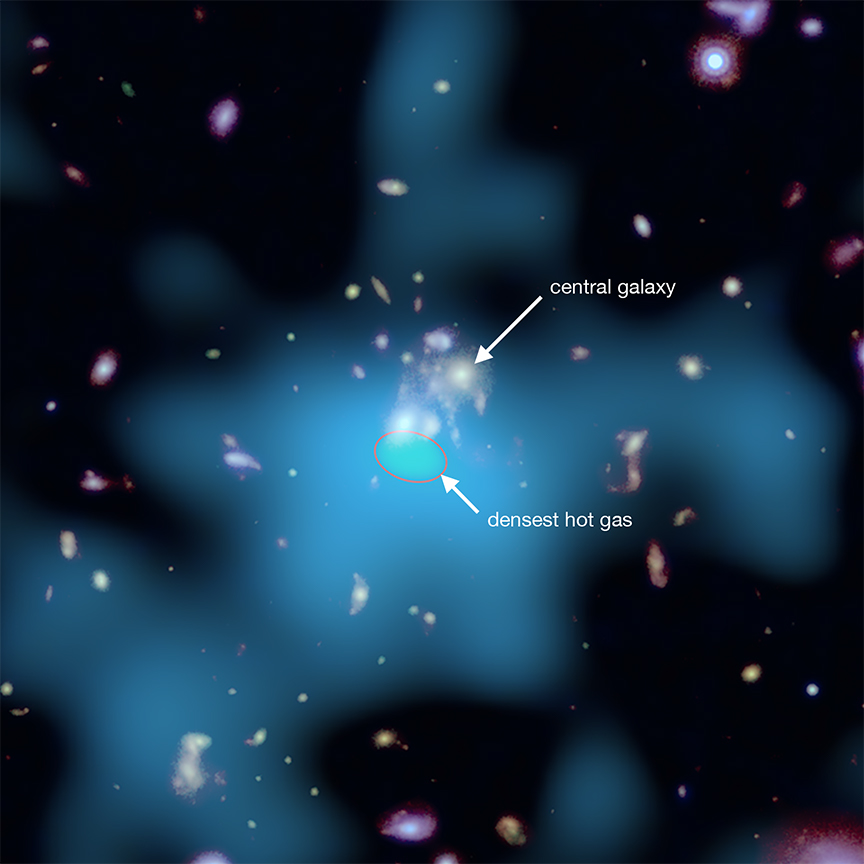CXC: SpARCS1049: Black Hole Fails to Do Its Job
Posted: Mon Aug 03, 2020 7:43 pm
SpARCS1049: Black Hole Fails to Do Its Job
NASA | MSFC | SAO | Chandra X-ray Observatory | 2020 Aug 03
Evidence of Runaway Gas Cooling in the Absence of Supermassive
Black Hole Feedback at the Epoch of Cluster Formation ~ J. Hlavacek-Larrondo et al
NASA | MSFC | SAO | Chandra X-ray Observatory | 2020 Aug 03
A galaxy cluster is demonstrating what can happen when a supermassive black hole stops being active, as described in our latest press release. SpARCS104922.6+564032.5 (SpARCS1049 for short) is a galaxy cluster located 9.9 billion light years away from Earth. Galaxy clusters contain hundreds or thousands of galaxies pervaded by hot, X-ray emitting gas that outweighs the combined mass of all the galaxies. In this image of SpARCS1049, X-rays from NASA's Chandra X-ray Observatory (light blue) have been combined with optical and infrared light data from NASA's Hubble Space Telescope (red, green, and blue).X-ray: NASA/CXO/Univ. of Montreal/J. Hlavacek-Larrondo et al;
Optical/IR: NASA/STScI
Astronomers have seen many examples where a supermassive black hole in a cluster's central galaxy prevents this hot gas from cooling to form vast numbers of stars. This heating allows supermassive black holes to influence or control the activity and evolution of their host cluster.
However, the would-be domineering black hole in SpARCS1049 is behaving differently and is almost completely dormant. This appears to be allowing star formation to run rampant. According to observations from Hubble and NASA's Spitzer Space Telescope, SpARCS1049 is forming stars at a rate over 300 times our Milky Way galaxy. (At this rate of SpARCS1049, all of the stars in the Milky Way could form in just 100 million years, which is one percent of our Galaxy's age of more than 10 billion years.) ...
Evidence of Runaway Gas Cooling in the Absence of Supermassive
Black Hole Feedback at the Epoch of Cluster Formation ~ J. Hlavacek-Larrondo et al
- arXiv.org > astro-ph > arXiv:2007.15660 > 30 Jul 2020

